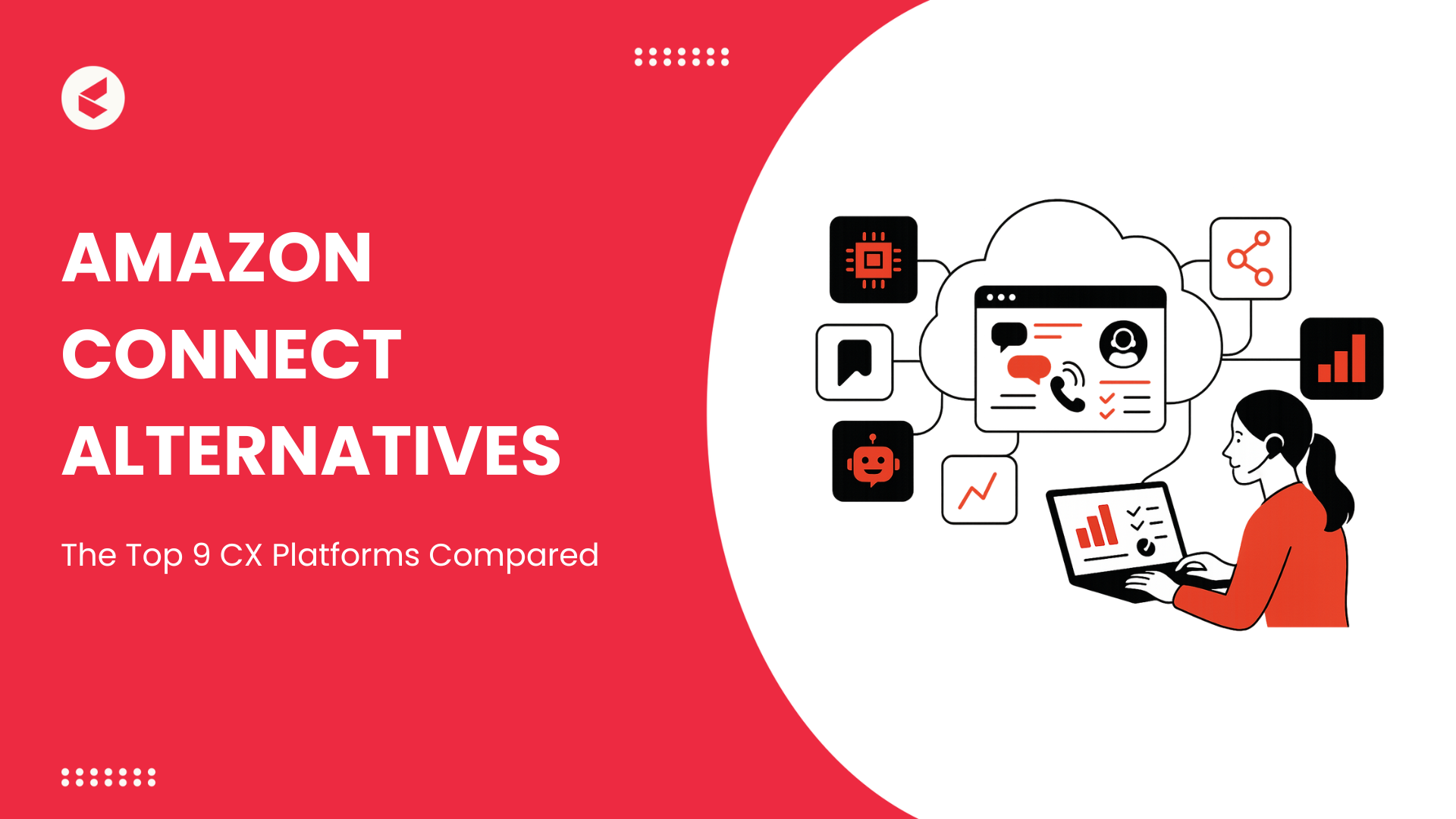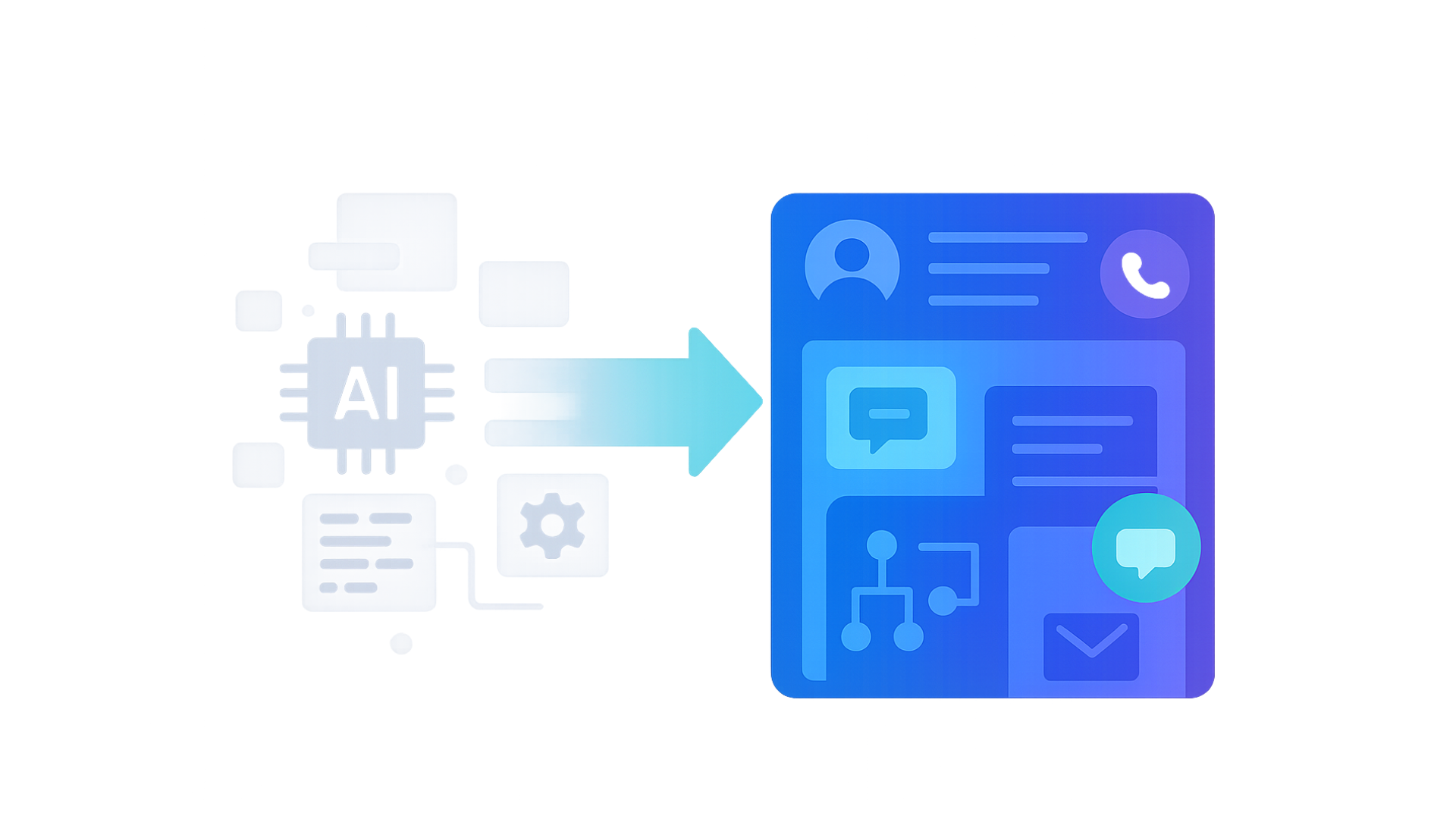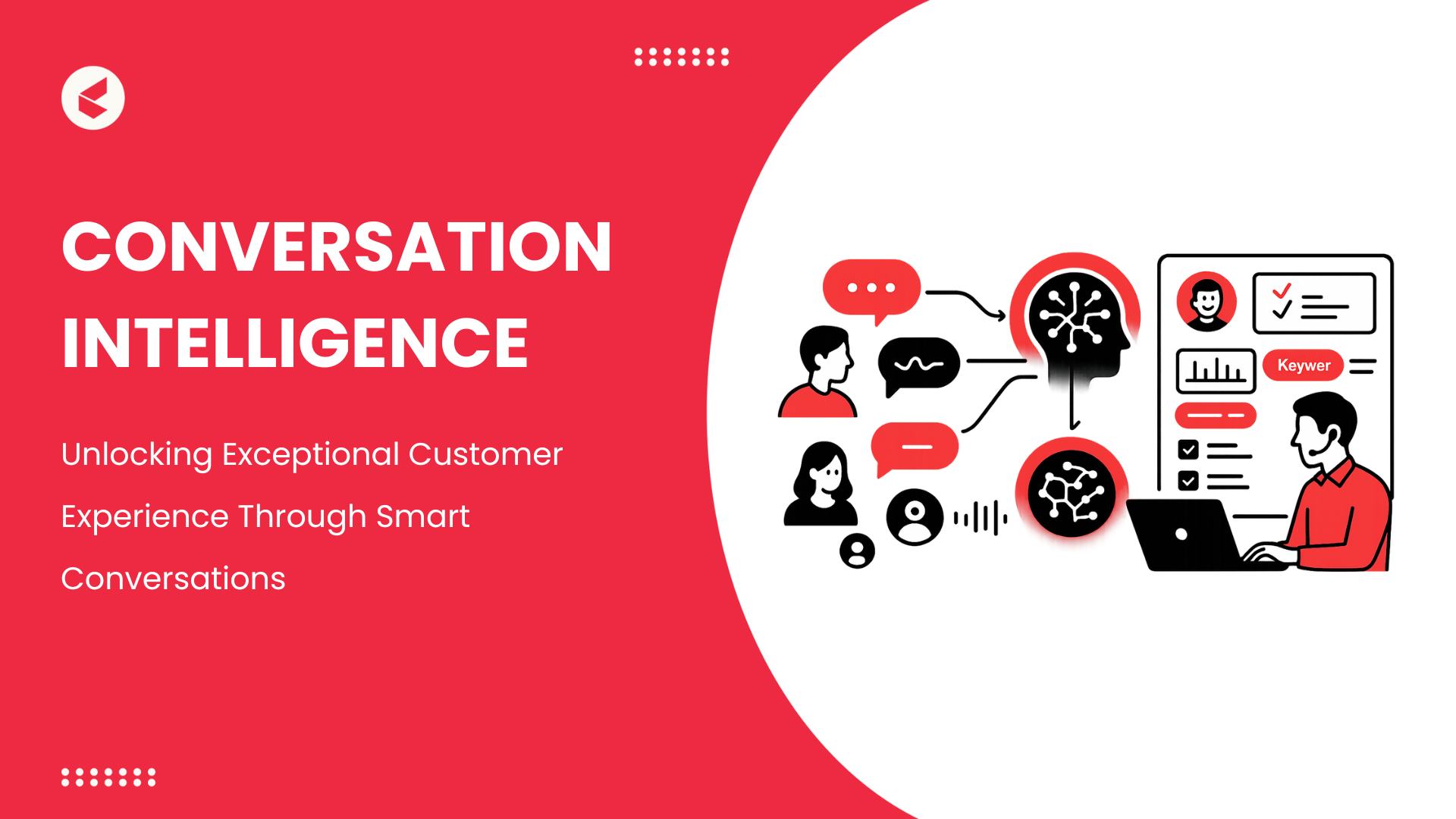If you’re running a support operation in 2025, you’ve probably noticed something odd: contact-center software got a lot more powerful, but not exactly easier to live with.
Amazon Connect is the default pick for teams already knee-deep in AWS, yet plenty of folks discover the catch later, i.e., once the bill spikes or the “simple” configuration turns into a weekend project.
As per McKinsey, 75% of consumers use multiple channels throughout their support journey, making the cracks in a stitched-together system impossible to ignore.
This guide is for people who want options without sitting through vendor sales pitches or pretending every product solves every problem. Here’s a list of the top Amazon Connect Alternatives you must know in 2025.
Top 9 Amazon Connect Alternatives: A Quick Comparison
With only 5% of contact centers ever hitting a world-class FCR of 80%+, the platform you choose has a real impact on how quickly issues get resolved. This table gives you a fast scan of how the major players stack up:
| Platform | G2 Rating | Why |
| Genesys Cloud CX | 4.4 | A full-stack CX platform that replaces Connect’s multi-service setup with unified routing, WFM, and analytics. |
| NiCE CXone | 4.3 | Enterprise automation that handles complex workflows end-to-end without relying on custom-built AWS logic. |
| Five9 | 4.1 | It delivers steady call quality, strong agent assist, and quick configuration for high-volume teams. |
| Talkdesk | 4.4 | An AI-first system to help support teams roll out automation, routing, and channel workflows without a heavy technical lift. |
| RingCentral Contact Center | 4.3 | A unified comms + CC environment that simplifies operations for hybrid teams running calls, messaging, and support together. |
| Webex Contact Center | 4.2 | A single ecosystem where calling, collaboration, and customer service sync cleanly, reducing tool sprawl and admin overhead. |
| Zendesk Talk | 4.6 | Voice support is embedded directly inside the Zendesk workspace, keeping calls, tickets, and customer history in one place. |
| Freshcaller (Freshdesk Contact Center) | 4.4 | A lightweight, fast-to-launch contact center built to plug smoothly into Freshdesk’s omnichannel support flow. |
| Kapture CX | 4.7 | An AI-first platform designed to automate large-scale support operations with pre-built agents, real-time insights, and deep workflow coverage. |
Top 9 Amazon Connect Alternatives to Explore
Inbound voice still makes up 55% of all contact volume, so call quality and routing logic matter more than most vendors admit. So if your current system feels a little too tied to AWS, this list gives you options that fix those gaps.
Let’s get straight into it:
1. Genesys Cloud CX
Genesys Cloud CX appeals to teams that don’t want to stitch a contact center together with scripts, storage buckets, and whatever else AWS expects you to manage.
It consolidates routing, digital channels, and workforce tools into a single system that doesn’t require you to babysit infrastructure. If Connect feels like “some assembly required,” this is the version where most of the parts are already in place.
What makes it a stronger pick than Amazon Connect
- Build and update voice, chat, and digital flows in one place, so you don’t juggle multiple tools or rewrite logic across channels
- Let agents see real-time prompts pulled from call transcripts, cutting down their after-call work and reducing mistakes
- Route customers automatically based on behavior and history instead of writing custom logic or maintaining extra scripts
- Connect your CRM in minutes and sync caller data, tickets, and notes without wrestling with middleware
- Lock down data with encrypted traffic and region-specific controls so compliance reviews don’t turn into long projects
2. NiCE CXone Mpower
NiCE CXone Mpower is the pick for teams that want heavy automation without wiring a dozen AWS components together. Instead of juggling separate AI tools, task bots, and routing systems, NiCE wraps everything into one engine that actually talks to itself.
Compared to Connect, you spend far less time gluing pieces together and far more time getting work out of the platform. It’s built for operations where “patch it later” isn’t an option.
What makes it a stronger pick than Amazon Connect
Orchestrate full-service workflows in one place so customers never have to repeat details when switching channels
- Match customers to agents based on history and context, not hand-written routing logic
- Trigger outbound messages and automated follow-ups when customers stall, drop off, or hit friction
- Pull back-office tasks, CRM data, and conversation threads into a single desktop so agents stop hunting for context
- Use AI copilots to summarize calls, surface answers, fill fields, and slash wrap-up time
- Build self-service experiences that handle multi-step requests instead of dumping the customer back to a queue
3. Five9
Five9 is built for teams that want strong AI assistance and reliable voice quality without wrestling with a tangle of cloud services. It leans heavily into practical automation and stable routing, with far less engineering overhead than Connect.
If your operation lives or dies on call handling speed and agent accuracy, Five9 gives you tools that work immediately instead of asking you to assemble the plumbing yourself.
What makes it a stronger pick than Amazon Connect
- Use pre-built call flows and routing rules that don’t require scripting or separate AWS components
- Give agents real-time cues, knowledge lookups, and field suggestions that plug straight into the desktop they already use
- Auto-summarize calls and drop key details into CRM records without extra configuration
- Connect Salesforce, Zendesk, MS Dynamics, and ServiceNow with connectors that don’t need custom Lambdas to stay stable
- Keep voice quality consistent with Five9’s own telephony backbone rather than relying on internet-only audio
4. Talkdesk
Talkdesk appeals to teams that want automation baked into the contact center instead of bolted on later. It leans toward an AI-first design but avoids the “you need three engineers to turn it on” problem that often shows up with Connect.
The platform handles routing, agent support, and outbound work with far less configuration overhead, which makes it a solid choice for companies that need quick deployment without sacrificing flexibility.
What makes it a stronger pick than Amazon Connect
- Build automated workflows across channels without wiring together separate services or writing glue code
- Let AI agents handle repetitive requests so human agents focus on the stuff that actually needs judgment
- Surface real-time hints, context, and next actions for agents the moment a conversation starts
- Drop call summaries, transcripts, and classification data directly into CRMs without extra connectors
- Monitor quality, staffing, and coaching needs inside the same interface instead of exporting data into other tools
5. RingCentral
RingCentral is the pick for teams that want one platform for phones, messaging, meetings, and contact center work instead of juggling separate vendors.
It’s built for companies that treat communication as a shared system across the business, not a siloed support tool. Compared with Amazon Connect, you get fewer moving parts, smoother deployment, and better tools for frontline staff who spend their day hopping between calls and internal conversations.
What makes it a stronger pick than Amazon Connect
- Run voice, contact center, messaging, and video from one platform so agents switch channels without juggling extra apps
- Let AI assistants recap calls, summarize meetings, draft internal notes, and guide new agents without custom workflows
- Route calls using built-in logic instead of assembling routing rules across multiple AWS services
- Set up AI receptionist flows that handle intake questions and free up agent time without writing scripts
- Keep operations stable through RingCentral’s global telephony network instead of relying on plain internet audio
6. Cisco Webex Contact Center
Webex is built for companies that want their collaboration tools and contact centre to live in the same ecosystem.
If your agents bounce between calls, internal chats, and meetings all day, Webex wipes out the constant app-switching that slows teams down. Compared with Amazon Connect, you avoid managing a patchwork of AWS services and instead get a single environment that handles calling, routing, meetings, and AI assistance without extra wiring.
What makes it a stronger pick than Amazon Connect
- Keep agents in one interface where calling, messaging, and internal collaboration all run together
- Use AI to generate live guidance, fix audio clarity issues, clean up background noise, and provide summaries without custom setup
- Connect CRMs and ticketing tools through stable, ready-to-use integrations that don’t require scripting
- Manage your entire setup, contact center, devices, users, and permissions through one administrative dashboard
- Enforce security with Webex’s encrypted-by-default model and predictable compliance controls across global regions
7. Zendesk Talk
Zendesk Talk is built for teams that want voice support sitting right inside the ticketing system they already use. Instead of jumping between a phone platform and a helpdesk, everything lives in the same workspace.
Compared with Amazon Connect, the big advantage is simplicity: no need to wire Lambda functions, no switching tabs to track customer history, and far less setup work for basic call handling.
What makes it a stronger pick than Amazon Connect
- Build IVR menus in minutes and route callers based on skills, hours, or triggers without relying on multiple AWS services
- Auto-create tickets for voicemails, call recordings, and missed calls so nothing falls through the cracks
- Drop call summaries, notes, and audio directly into the CRM instead of exporting data into S3 buckets or external storage
- Handle call monitoring, warm transfers, call queues, and callbacks through ready-made tools instead of custom logic
- Use the Partner Edition to connect Talk to other telephony systems, including Five9, NICE, and even Amazon Connect, if your setup evolves
8. Freshdesk Contact Center
Freshcaller is built for teams that want a simple, lightweight voice platform tied directly to their helpdesk. Instead of learning a maze of AWS services or rewiring call flows every time your process changes, you set things up in a few clicks and get a clean, consistent workspace for agents.
For support teams already living inside Freshdesk, this is the fastest way to add voice without overhauling your stack.
What makes it a stronger pick than Amazon Connect
- Use speech-enabled IVR and voice bots to offload repetitive questions so queues don’t balloon
- Allow agents to work remotely without VPN or hardware; everything runs from the browser
- Bring your own carrier or buy global numbers without navigating AWS’ telephony setup
- Use call recordings, transcripts, and lifecycle views to coach agents and fix weak spots quickly
- Keep phone, chat, email, and messaging aligned since Freshcaller plugs directly into Freshdesk’s omnichannel workflow
9. Kapture CX
Kapture pushes hard in the AI-agent direction, but without the chaos you get when trying to bolt generative tools onto Amazon Connect.
Instead of juggling half a dozen AWS services to automate even simple tasks, Kapture gives you an AI-first workspace where human agents and AI agents work inside the same system.
It’s built for enterprises that want automation to carry real weight, handling tickets, resolving routine queries, and guiding agents in real time, without stitching together a homegrown solution.
What makes it a stronger pick than Amazon Connect
- Deploy AI voice agents and chat agents in minutes, not after a week of building Lambdas, API triggers, and custom routing
- Shift repetitive work to pre-built AI workflows so human agents focus only on the cases that actually need judgment
- Give agents real-time cues, context, and next steps based on the live conversation instead of static prompts
- Carry conversation context across voice, email, WhatsApp, Instagram, and other channels so customers never repeat themselves
- Review every interaction automatically through AI-driven QA rather than sampling a tiny percentage
- Track sentiment, emerging issues, workloads, and forecasts inside one analytics layer instead of exporting logs into BI tools
- Pull customer history, journey details, and ticket data into a unified view without wiring up multiple AWS components
What Is an “AI Workspace” in CX (And Why It Beats Bolt-on Bots)
An “AI workspace” is a single environment where agents, supervisors, and AI systems all view the same information, respond to the same signals, and move a customer issue from start to finish without passing the baton through five different tools.
Most companies don’t realize how much time they lose to window-switching, copied notes, and half-finished customer context trapped in disconnected systems.
An AI workspace kills that overhead. It offers so much more than faster resolutions and cleaner handoffs. AI workspaces actively push insights, draft messages, fill forms, score interactions, and flag the cases that are about to explode. Your agents don’t need to remember where information lives because the workspace brings it forward automatically.
The real win is predictability. With everything running through a single environment, staffing forecasts become sharper, QA stops being a guessing game, and customer patterns emerge sooner. Bolt-on bots can answer questions, sure, but they don’t shape how work actually gets done. An AI workspace does, and that’s why it changes the economics of running a support operation.
Buyer’s Checklist: How to Choose the Right Amazon Connect Alternative
Picking a new platform requires many checks, including whether your system reduces workload, speeds up resolution, and stays manageable as you scale.
Here’s a checklist to filter out vendors:
- Can your team manage it without relying on engineers for every change?
- Does routing work across voice, chat, and digital in one place?
- Is AI actually useful for agents (real prompts, summaries, actions), not just “assist” branding?
- Does the platform remove steps for your agents, or just add another tab?
- How cleanly does it integrate with your CRM and internal systems?
- Is the reporting detailed enough to catch bottlenecks without exporting data elsewhere?
- Does the vendor support real global operations, numbers, regions, and compliance?
- Can you automate repetitive tasks end-to-end without building custom logic?
- Is pricing predictable when your call volume spikes or AI usage grows?
- Does the platform reduce your tech stack, or quietly expand it?
Which Amazon Connect Alternative Fits Your Use Case?
Different CX teams hit different bottlenecks; some need automation, some need stronger routing, some just need to stop juggling ten different tools.
Here’s a map that will help you match each platform to the scenario where it actually performs:
| Platform | CX Scenario | Best Fit For | Why It Matches |
| Genesys Cloud CX | Unified routing + workforce management | Mid-market & enterprise ops | Strong routing logic and built-in WFM keep large teams coordinated. |
| NiCE CXone Mpower | High-volume automation needs | Large enterprises | Handles complex workflows without custom engineering or patchwork integrations. |
| Five9 | Voice-heavy environments | Call-driven teams | Reliable telephony and fast agent assist keep volume under control. |
| Talkdesk | Rapid automation rollout | Teams needing quick wins | Pre-built workflows and a clean UI let you launch changes without dev cycles. |
| RingCentral Contact Center | Blended comms + CX | Hybrid and distributed teams | Phones, chat, meetings, and support stay inside one system. |
| Webex Contact Center | Collaboration-driven CX | Cisco/Webex orgs | Calling, meetings, and customer support flow through a shared ecosystem. |
| Zendesk Talk | Ticketing-first service setups | Zendesk-heavy teams | Calls drop directly into tickets with full history and context. |
| Freshcaller | Lightweight omnichannel | Growing SMB teams | Fast setup and seamless link to Freshdesk keep overhead low. |
| Kapture CX | AI-led, enterprise-scale automation | High-volume, multi-channel support | Pre-built AI agents, deep insights, and end-to-end workflow coverage handle scale cleanly. |
Make the Choice That Cuts Friction, Not Adds Features
Most teams don’t ditch Amazon Connect because it’s missing a button; they leave because the day-to-day work feels heavier than it should.
The real test for any alternative is simple: does it reduce steps for your agents, keep data in one place, and give you an AI workspace that actually handles work instead of handing you suggestions you’ll ignore?
Pick the platform that fits your workflows as they are, not the one that asks you to rebuild them to fit its menu. If you want an AI-first system that handles volume, carries context across channels, and keeps operations clean as you scale, Kapture CX lands closest to that target.
We not only cut the clutter from your support stack, we give your agents an environment where everything they need is already in front of them.
Get a demo and see how we handle your real workflows!
FAQs
Several platforms serve as strong replacements depending on your needs. Kapture CX, Genesys Cloud CX, Zendesk Talk, etc., offer simpler setup, stronger automation, or deeper features than Connect in different areas.
It can work, but the setup often feels heavy for smaller teams because many core features require extra AWS services. Most small businesses prefer simpler, unified platforms like Freshcaller, Talkdesk, or RingCentral.
Teams usually move on when they’re tired of maintaining multiple AWS components, want stronger reporting, or need automation that doesn’t require constant engineering support.
Kapture CX stands out for real-time agent guidance, automated summaries, and end-to-end workflow automation that doesn’t rely on custom code.













